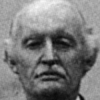Edvard Munch

Edvard Munch
Edvard Munch; 12 December 1863 – 23 January 1944) was a Norwegian painter and printmaker whose intensely evocative treatment of psychological themes built upon some of the main tenets of late 19th-century Symbolism and greatly influenced German Expressionism in the early 20th century. One of his most well-known works is The Scream of 1893...
NationalityNorwegian
ProfessionPainter
Date of Birth12 December 1863
CityAdalsbruk, Norway
CountryNorway